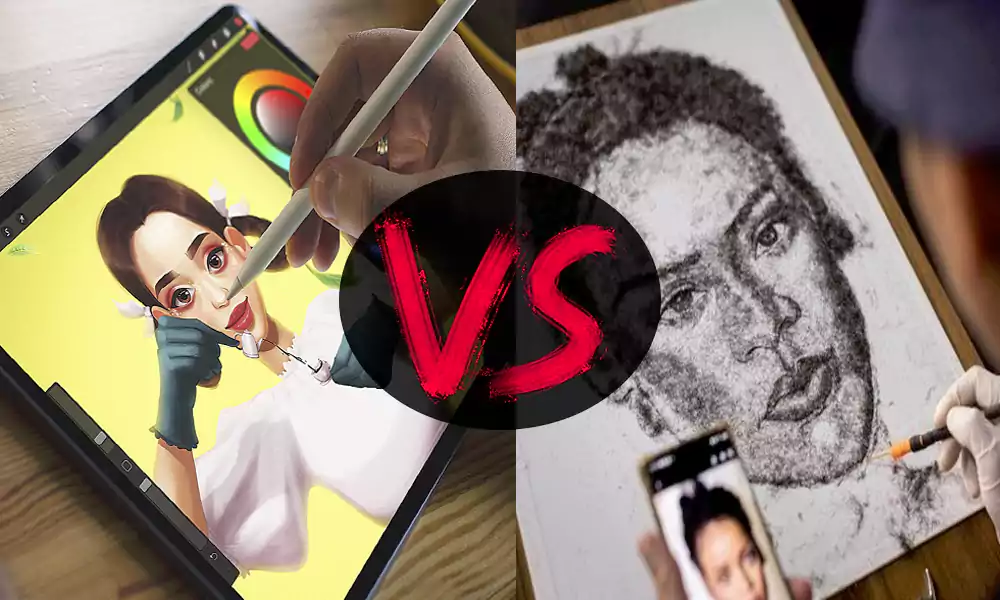

The first half of 2022 hasn’t been good for the stock market. A bear market has engulfed traditional assets and investors are hurting.
This is exactly why you need to diversify your portfolio. While stocks, real estate, and precious metals are the most common asset classes, they certainly aren’t the only ones you should consider.
Fine art, or traditional art, is a solid investment that is likely to increase in value as time goes on, particularly after an artist passes away. And digital art, as well, is quickly becoming its own asset class.
Digital art vs traditional art, what is the better investment, and which should you focus on collecting? Keep reading our digital and traditional art guide below to find out now.
Also, Read This: Why do 3D Designers Need a 3D Architectural Visualization Portfolio?
Traditional art is what most people are familiar with. This is when an artist uses physical materials, such as canvas, paint, acrylic, and so forth, to create a single piece of art.
That art can be sold and then displayed in a home or museum.
To resell the art, you need to go through a complex process, though it is possible. You’ll likely pay commissions to fine art dealers, though it’s unlikely the original artist is going to receive a cut of that sale. They only make money on original sales.
This limitation is partially responsible for the rise in digital art, specifically NFTs, as artists have the option of earning from their work over and over again.
Digital art can be many things. It’s graphic design. It’s artwork created in painting software programs. And most importantly, it’s an NFT.
NFT stands for non-fungible token. While they’ve been around since 2017, they didn’t really grow in popularity and use cases until 2021, when they exploded.
NFTs are tokens on the blockchain. That means they are very similar to cryptocurrency. The owner can be verified on an open, public ledger.
But unlike currencies, NFTs are unique. One dollar is the same as one dollar. Each dollar is interchangeable.
But NFTs are individual, unique tokens. They are not interchangeable. If only one NFT was made of a particular artwork, then only one person can own that at one time.
Many people argue that NFTs, because they are JEPG images on the internet, can be copied by right-clicking and saving the image.
But while you can duplicate the image, you cannot duplicate the token on the blockchain. Only the person who owns the actual token can resell it, making NFTs safe to invest in, just like traditional art.
Plus, artists are able to make commissions each time an artwork is resold on the secondary market, helping artists make a more sustainable living.
So what should you get into, digital or traditional art? Traditional art has a higher ticket to entry. Buying a piece can cost thousands of dollars upfront.
Plus, you often have to attend art shows or auctions to get quality pieces.
With NFTs, you can get started on any budget. And you can start collecting from world-class artists right from your couch. See here some of the unique pieces you can get your hands on today.
Digital art vs traditional art, both can be fulfilling to collect, and both can be smart to invest in. But the process of collecting these different categories of artwork is very different.
Digital art and NFTs are more approachable to aspiring collectors of any budget. Hopefully, our traditional vs digital art guide has helped you decide what to focus on.
Looking for more information? Visit our blog now to keep reading.
Cybersecurity has grown to be a major worry for both individuals and corporations in the… Read More
Key Takeaways: Professional office cleaning services in Atlanta create a positive impression on clients and… Read More
Have you ever considered renting a property in Canada as an international tenant? Navigating the… Read More
GoMeet is a free video chat app similar to CooMeet that enables you to meet… Read More
In the ever-evolving world of digital marketing, on-page SEO remains a fundamental component for achieving… Read More
Did you know that Oud is one of the most loved scents in the world?… Read More